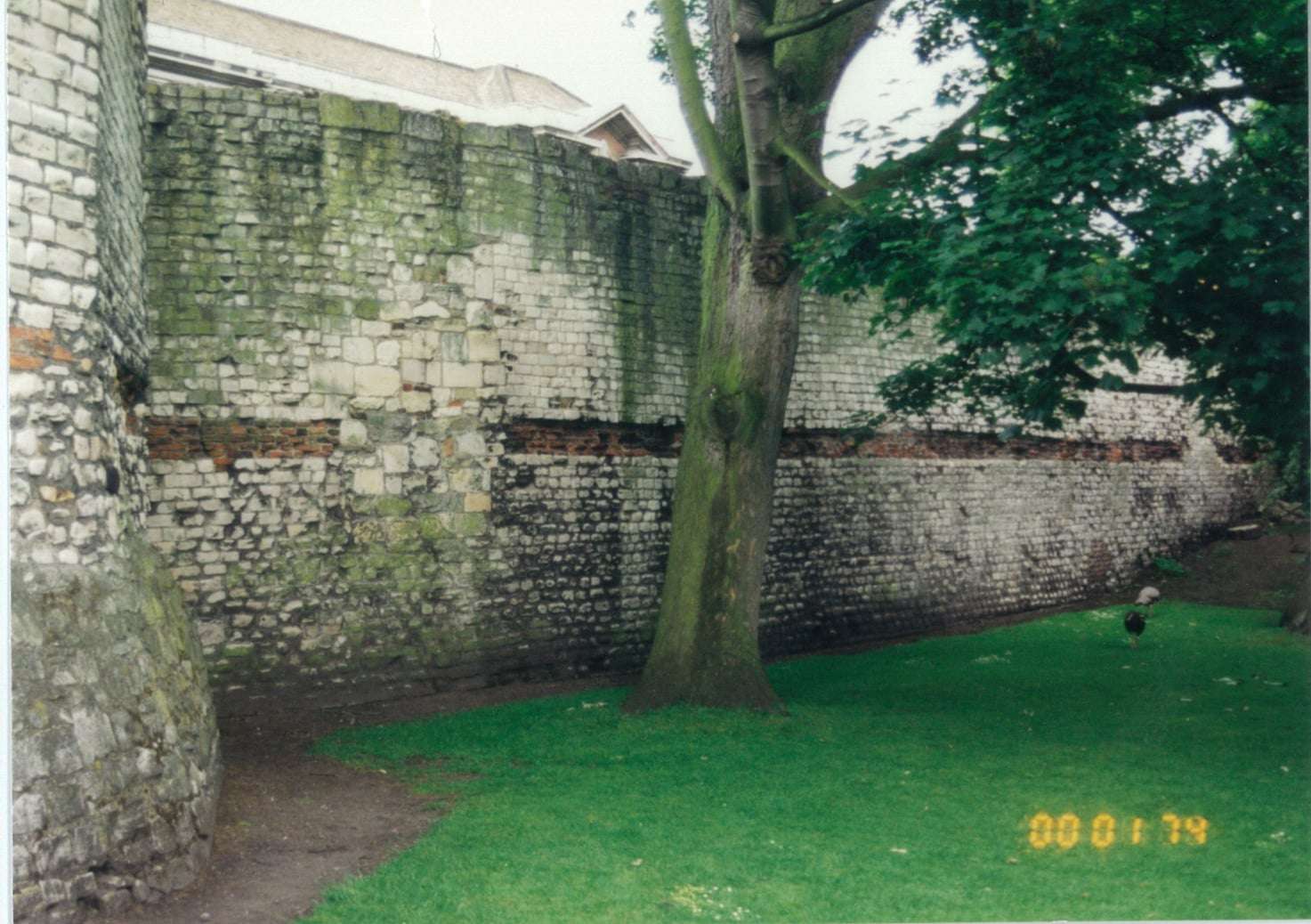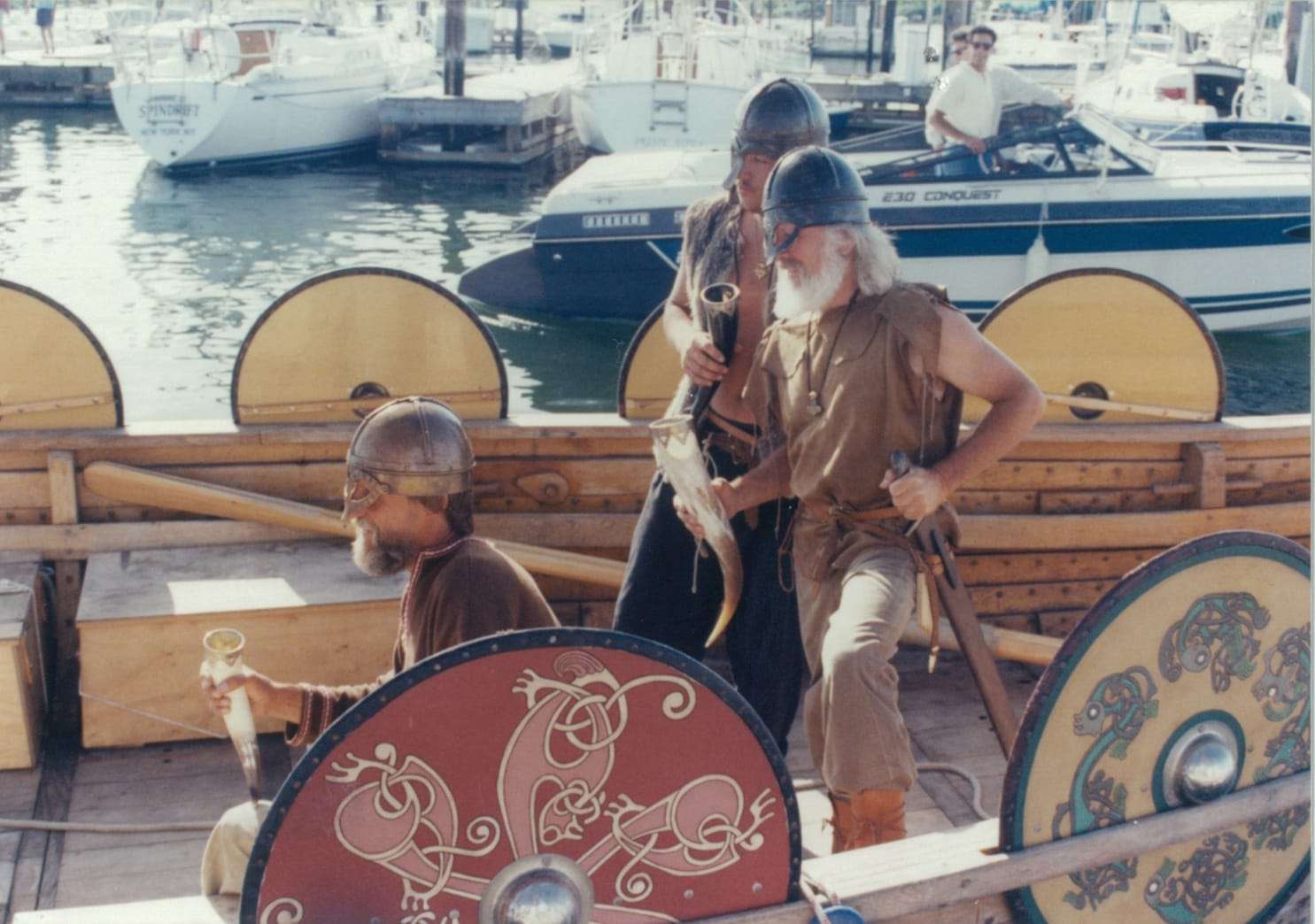The Volokh Conspiracy
Mostly law professors | Sometimes contrarian | Often libertarian | Always independent
Doing your research

Research is simultaneously the great pleasure and the great pain of writing historical fiction. You select a period because you're interested in it and when you're interested in something time becomes elastic, so researching it can easily consume hours or days; it can also be a rabbit hole that's hard to climb out of. If you're only writing stories set in a single period your research never ends, so you end up knowing a lot more about a historical period than most humans who aren't academic specialists or Jeopardy savants. And the danger is that because you know all those things you're tempted to use as much as you can. Don't do it.
Research should be like an iceberg, only 10 percent of it should show (maybe less). None of it is wasted; the other 90 percent supports the 10 percent that you use in the fiction - it informs your characters and plot and theme and keeps you honest. Me, I'm not always as honest as I should be. I like to follow those tangents, and sometimes I follow them farther than I should.
All of the things that went into building a cathedral are interesting (Pillars of the Earth). How you kept bees in the 8th century is interesting. Anglo-Saxon law is interesting. In the heat of the compositional moment it's hard to keep in mind that the minute details aren't that damn interesting to the reader, who wants to find out who dunnit, not explore the geography of Eoforwic like a gob-smacked tourist from Yeavering or set up his own apiary in the back yard.
I justify my excesses of detail with the self-serving rationalization that people read historical mysteries because they're interested in the history, and that's true, but they're really reading because they're interested in the story, and anything that pulls them out of the story is bad, even if it's historically accurate. I'll try to do better.

There are lots of ways to do research, but I suggest that you start with an acknowledged major work on your period. For me it was Sir Frank Merry Stenton's, Anglo-Saxon England. Read the fundamental book on your period from cover to cover, and then look at the bibliography. That's the starting point for your real research. Find and read every primary source you can because this will give you insight into how people wrote and thought at the time, how they expressed themselves and what they thought was important.
Think about the primary sources critically because lots of those guys were unreliable narrators who were writing propaganda about a patron or blackening an enemy's reputation. (You end up researching your research.) Then locate secondary sources that concentrate on the aspects of the period that are most important to your story. Read those books and use their bibliographies to expand your research. Notice in particular when books appear in more than one bibliography because that means they're important. Find them and read them, read their bibliographies, track down those books.
This is how you collect historical facts. The way to collect the facts no one at the time thought to record is living history. Historical reenactment societies have already done a lot of your research for you. If you want to see what colonial living was like in America, go to Williamsburg, Virginia. There are hundreds of Civil War reenactment groups in the United States. In Europe, there are hundreds of Viking and Anglo-Saxon reenactment groups, there are English Civil War reenactment groups, there are Roman reenactment groups and there are Celtic reenactment groups. All of these groups participate in large reenactment events, often at or close to the sites where important historical events occurred.
They reenact the battle of Hastings every year, and it's a big deal - sometimes they have cavalry. But whether you're watching a few thousand people recreate a battle in Kent or sitting by a campfire in Pennsylvania listening to a reenactor from the 8th Ohio Infantry play the fiddle, you'll be learning how it felt to inhabit that space or wear those clothes or carry that gear. You'll find out where the blisters develop and how heavy a sword actually is and what a sheep smells like. You'll know what an infantry regiment smelled like after three days in July sun at Gettysburg. That's all research and all those details will find their way into your fiction.
Most of the European reenactors I've met can tell you the provenance of the gear they're wearing. What period and region it's from, whether it's a reproduction of an original grave find or a copy of a regional style without an extant example. I have Viking shoes made on the pattern of an original Viking shoe found in York, England. I've seen the original. Same size I wear. I have friends who make period-authentic swords and leather bags and belts and harnesses and cast brass and iron fittings that are replicas of the originals, weave cloth on upright looms, make butter, thatch roofs and keep bees. If you stand in a forge and work the bellows for ten minutes you understand a little more what went into making those items.
Travel is expensive and takes time, I get it. Not everyone can afford to take a research trip. If you can do it, though, you should. Even if you don't go to a reenactment event, traveling to the location you're writing about will supply the answers to questions you didn't even know you should be asking. What's the weather like? What does the night sky look like? How cold is the rain? How scratchy is gorse, and what is gorse, anyway? The answers are all detail and every one of those details has made its way into a story I've written.
Over the years I've been to Iceland a couple of times, England, Germany, Sweden, Denmark, and the Netherlands. I watched reenactors sack Lindisfarne on the 1200th anniversary of the event and I've worked a stall in a Viking market in Moesgård, slept in a Viking tent in Halnarfjorđur, sat at an ore in a Viking ship in Roskilde fjord, walked all over Hedeby and Trelleborg (Denmark), wandered through an abandoned 8th century village outside York and been asked to stand in the shield wall while they stormed the gate at Trelleborg (Sweden). Every one of those experiences found its way into my fiction.
When you travel, take pictures. I don't mean just snapshots of castles or sunsets, or selfies in front of Notre Dame Cathedral, I mean pictures of everything. Digital cameras make that easy; even your phone will probably take a pretty good picture, but don't rely on your phone. Spring for a good, mid-level digital camera, a zoom lens, and at least half a dozen 4 gig cards. Take a laptop along and a card reader so you can transfer those images to a hard drive and free up your cards for more images. If the laptop has a DVD/CD burner even better: you can back up your images. You want all those images because then you don't have to remember everything; you can display an image and just describe it.
There's no excuse for not coming back with thousands of images: wide shots, close-ups, medium shots, and detail shots of just a few square inches of furniture or a farm tool or a horse's harness. Revisiting those pictures will trigger the memory of smells and textures and other sensations that can go into your fiction. The images you find online are okay, but you'll discover pretty quickly that the picture someone else takes never quite records the details you need to know.
The downside of this research is that you end up reading fiction set in your period much more critically. I started reading a book last week about Vikings in Ireland. Lots of people like this book. About three or four pages into the first chapter, though, one of the Vikings is wearing a horned helmet. That was it for me; I couldn't read any more. This is the fundamental mistake when writing a Viking story, the mistake that you can't recover from.
Vikings didn't wear horned helmets until they wandered across the stage in Victorian productions of Wagnerian operas. Nothing will yank a knowledgeable reader faster out of a Viking story than a horned helmet. Suspension of disbelief is impossible after a Viking puts on a horned helmet. You show up at the big reenactment event in Moesgård or Trelleborg or Ribe wearing a horned helmet and you'll be laughed out of Denmark. Don't be the guy who equips his Vikings with horned helmets: do your research.

The easiest way to begin your research is by using the net, but if you only use the net you're being lazy. There's also a lot of garbage on the net so verifying a fact or detail from multiple sources is essential. Now unless you're setting your story in a period that's well covered by popular historians, a lot of the books you might need are probably expensive academic publications. They're written by specialists for a specialist audience and they have to be expensive to break even. A book on inhumation grave goods in Wessex in the 6th Century isn't going to be a runaway best seller on Amazon.
However, your local library is very likely part of a network of libraries that can get what you need in inter-library loan. This is a valuable resource. Also, look up the history department of the closest college or university and find out who who teaches the history of the period you're interested in. Write a short e-mail and ask if he or she would be willing to suggest the best books to read. If you're close enough and the professor is amenable, suggest a meeting. Spring for lunch (history professors are tragically underpaid) and explain what you're interested in. Don't ask the professor to read what you're writing, though; the professor has other things to do and they don't include reading your manuscripts.


Show Comments (0)